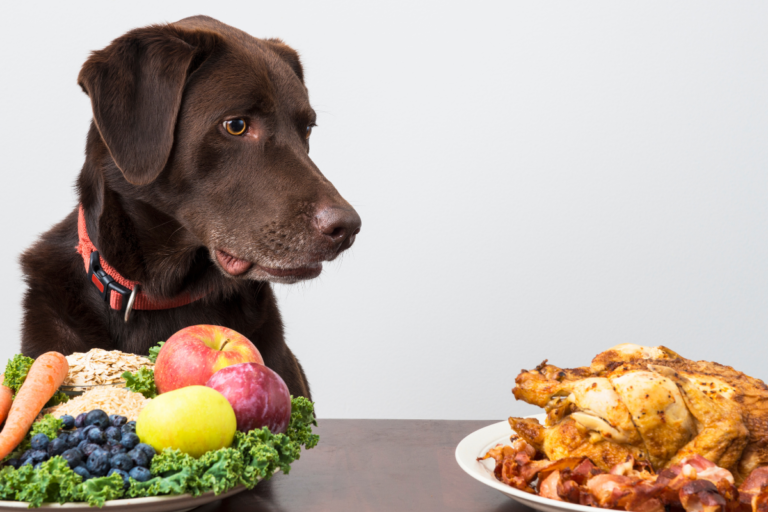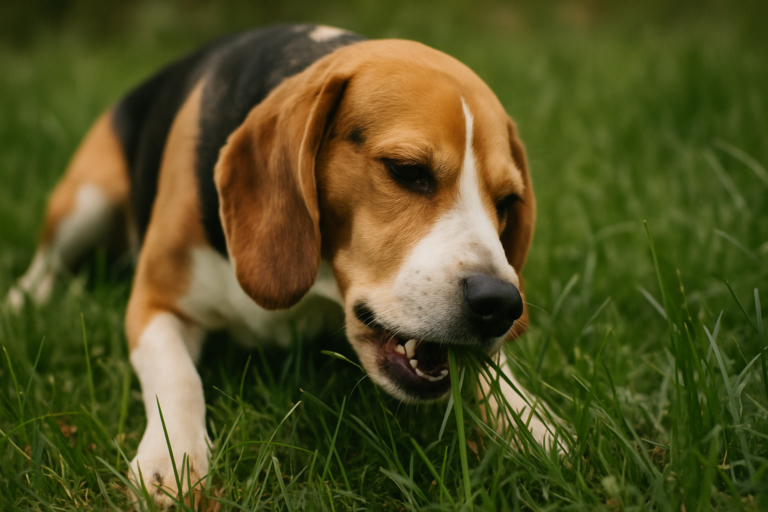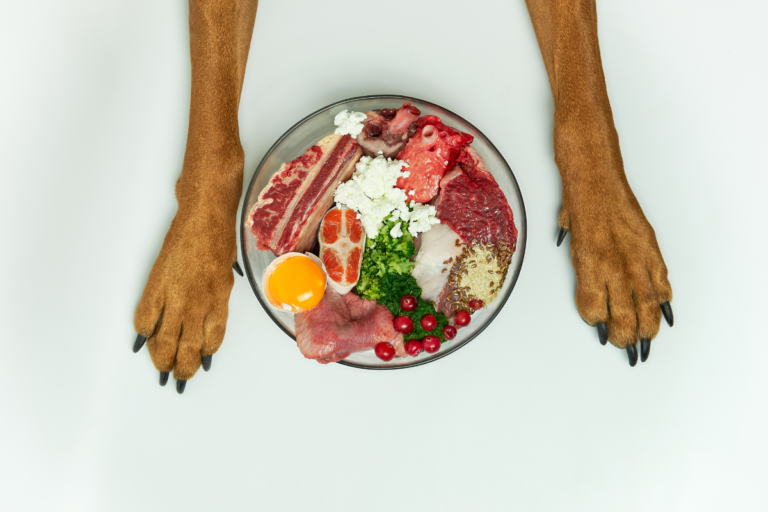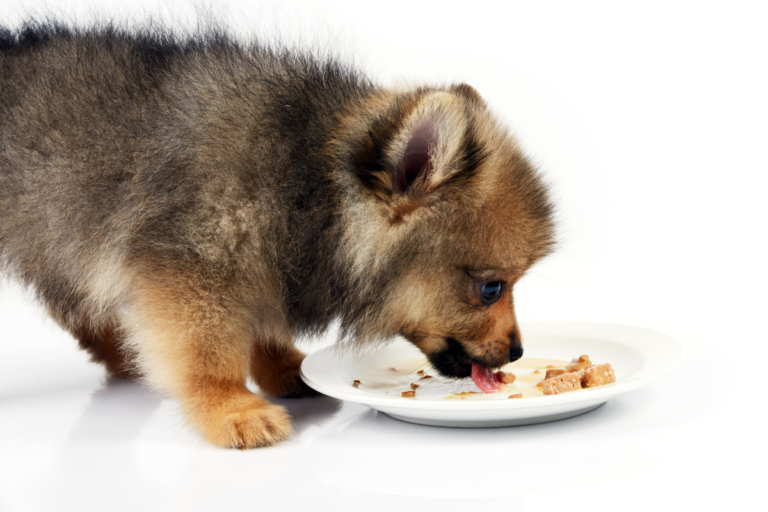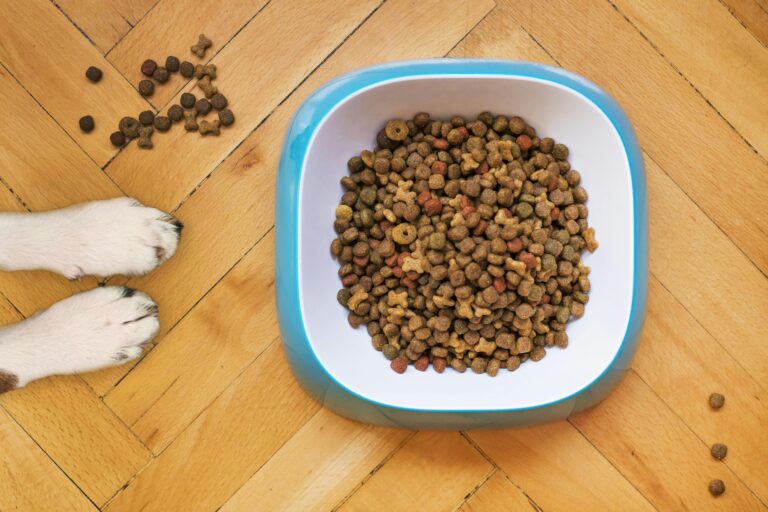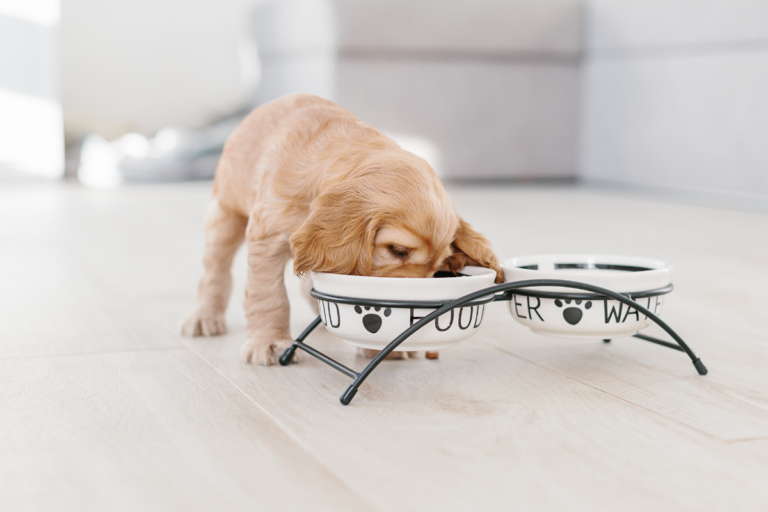Maximizing Health: Labrador Dog Food Chart Unveiled
Understanding Dog Nutrition
Taking good care of our furry pals means knowing what they need in their tummies. Just like us, a good mix of nutrients keeps them bouncy and happy. This is especially true for Labradors, who are always up for a game or an adventure. So here’s the scoop on the right stuff your dog needs and why a custom meal plan makes a difference.
Essential Nutrients for Dogs
Our dogs need a mix of big and little nutrients to keep them in top shape. Here’s the lowdown on what’s important:
Macronutrients
- Protein: It’s what those doggy muscles are made of! Puppies need a bit more to grow big and strong (PetMD).
- Fats: The fuel for those zoomies and helps soak up vitamins.
- Carbohydrates: Keeps their engines running and is good for digestive guts.
Micronutrients
- Vitamins: Doing all those little jobs like taking care of eyesight and bones. Example: Vitamin A for eyes, Vitamin D for bones.
- Minerals: Building blocks for healthy bones and nerves—includes calcium and potassium, among others.
Skipping on these can make your pooch feel poorly. For what not to feed, check our harmful ingredients section.
Importance of Tailored Diets
One bag fits all? Nope, doesn’t cut it in doggy diets. Puppies, seniors, and different breeds all munch differently. Puppies, for instance, are little energy balls needing more juice (PetMD).
Age, size, and how many laps they do around the park decide how much food ends up in the bowl. Overdoing it leads to them packing extra pounds, which is a no-go for those Labrador joints. Keeping a grip on portion sizes is the secret (Purina).
Keeping them trim and fit isn’t just for looks. Labradors at a good weight tend to hang around almost two years longer than chubby buddies (Dog Food Advisor). Custom meals cater to their exact needs, cutting back on excess.
| Life Stage | Protein (%) | Fat (%) | Carbohydrates (%) |
|---|---|---|---|
| Puppy | 22 | 8 | 4 |
| Adult | 18 | 5 | 3 |
| Senior | 20 | 7 | 3.5 |
Need more charts? Check our puppy nutrition guide.
Knowing what they need means your dogs get to enjoy full, bouncy lives. A meal plan fit for them keeps tails wagging longer. Want a superstar diet? Chat with expert pet nutritionists.
Feeding Guidelines for Dogs
Factors Affecting Feeding Amounts
Getting our pooches just the right meal is more art than science. It ain’t about dumping any old kibble in a bowl. Every dog’s chow lineup can look pretty different and here’s why:
Size and Breed
Ever notice how your St. Bernard seems to inhale a mountain of food compared to your friend’s tiny Yorkie? Bigger breeds need more grub to keep them going. It’s like a boxer versus a ballet dancer; both need fuel, just in different amounts.
Age
Just like human kiddos and adults eat differently, puppies need a menu of their own. Little furry tornadoes-in-training require more oomph—protein, goodies like vitamins, you name it. You can bet those needs will cool down as they grow into those floppy ears.
Activity Level
Got a dog who loves a good romp in the park? Or maybe one who’s more chill, preferring long Netflix binges with you? Active dogs, like an energetic border collie, generally need more chow than our couch potato pups. You don’t want your furball turning hangry on you—trust us.
Health Conditions
Sometimes, what’s up with your pup’s health plays a big role. Whether Fido’s got allergies or arthritial woes, a trip to the vet might be in order to chat about getting something special on their plates.
Dog Feeding Charts
Now, onto a tool that can make the magic happen—feeding charts. These bad boys are like cheat sheets for portion control, personalized for your dog’s stage in life and size.
Here’s a handy chart for a grown-up Labrador chowing down on kibble:
| Weight (lbs) | Feeding Amount (cups per day) |
|---|---|
| 55-70 | 2.5 – 3.5 |
| 75-90 | 3.5 – 4.5 |
| 95-110 | 4.5 – 5.5 |
Consider splitting up these portions if your dog’s a two-meals-a-day kind of pup. If you’re serving up 3.5 cups daily, serve half in the a.m. and half for dinner.
Discover more on feeding charts tailored just for your fur buddy:
- Dog Diet Chart
- Puppies Food Chart
- Puppy Diet Chart
Remember, this is just a tasty starting point. Adjusting portions based on expert tips, like those from a certified vet nutritionist, can help keep your four-legged family member happy and healthy.
Nutritional Needs for Different Life Stages
Our beloved Labradors need a little extra TLC when it comes to feeding them right at every stage of their life. We’re talking ensuring they’re as peppy, long-lived, and up for a game of fetch as ever. So let’s break down how to keep their bellies (and hearts) happy at every age.
Puppy Nutrition Requirements
Those lively Labrador pups are like little furry tornadoes! They burn energy like nobody’s business. That means they need more calories, protein, and particular vitamins than their older pals. This chow time strategy makes sure they grow up to be healthier and happier.
What’s Good in That Puppy Chow:
- Top-notch protein for muscles—like their well-loved tug-of-war strength
- Fatty acids to build that big noggin of theirs
- A good dose of calcium and phosphorus to keep those bones strong enough to withstand their zoomies
The Honest Kitchen mentions getting the right balance of calcium and phosphorus is ace during their growth spurts.
| Age (Months) | Weight (lbs) | Daily Calories | Protein (%) | Fat (%) |
|---|---|---|---|---|
| 2-4 | 10-20 | 600-800 | 28-32 | 15-20 |
| 4-6 | 20-50 | 800-1000 | 28-32 | 15-20 |
| 6-12 | 50-70 | 1000-1200 | 28-32 | 15-20 |
Wanna nerd out more on puppy diets? Peep our puppy nutrition chart.
Adult Dog Diets
As our Labs grow up (in theory), their feed needs a touch of a makeover. They need a diet pulling its weight—fueling energy, boosting immune systems, and keeping their coats glossy enough for Insta pics.
Things to Watch For:
- Proper portions to dodge the extra chonk
- Balanced eats to match their lively antics
- Lots of water for all that panting
The peeps at PetMD reckon with all their high-jinks, our Labs need a heap of exercise every day—minimum one hour, says Super Tails.
| Weight (lbs) | Daily Calories | Protein (%) | Fat (%) |
|---|---|---|---|
| 55-70 | 1400-1600 | 22-26 | 12-16 |
| 70-90 | 1600-2000 | 22-26 | 12-16 |
For the lowdown on adult dining plans, jump to our dog diet chart.
Senior Dog Care
When our Labs hit their golden years, it’s a little like putting them on a chill-out plan. Their metabolism has its brakes on, they’re less of a whirlwind, and we need to make sure they age with grace and style. Senior diets typically keep the calorie count low to avoid any unnecessary weight shorts (PetMD).
Senior Dog Diet Essentials:
- Gentle proteins to keep muscles toned
- Lower fats to dodge weight issues
- Joint-loving supplements, like glucosamine
What’s on the Menu for Our Older Popcorns:
| Weight (lbs) | Daily Calories | Protein (%) | Fat (%) |
|---|---|---|---|
| 55-70 | 1100-1300 | 18-22 | 8-12 |
| 70-90 | 1300-1500 | 18-22 | 8-12 |
For tips on giving love to your older Lab’s diet, flip through our series on board certified veterinary nutritionist recipes and check the dog diet chart.
Giving our labs the right munchies at the right time helps them stay in tip-top shape. And hey, a chat with a vet is always a good call to make sure we’re knocking it out of the park for their diet needs.
Ingredients to Avoid in Dog Food
We’re all about keeping our Labradors healthy and happy, so knowing which ingredients to kick outta their bowl is key. Some not-so-great stuff can sneak into dog food and mess with their health. Let’s shed some light on these sneaky ingredients and why they’re bad news.
Nasty Ingredients 101
Here’s the scoop on some common baddies in dog food:
| Ingredient | Why to Skip It |
|---|---|
| BHA (Butylated Hydroxyanisole) | A preservative that might mess up their kidneys and liver (TPLO Info). |
| White Flour | Messes with blood sugar, leads to munching too much and packing on the pounds (TPLO Info). |
| Meat Meal | A mystery meat mash-up with sketchy protein (TPLO Info). |
| Artificial Food Coloring | Could lead to hyper pups and allergic sneezes (TPLO Info). |
| Corn Syrup | Jacks up sugar levels and might lead to chubby, sluggish pups (TPLO Info). |
How These Baddies Harm Your Pup
BHA (Butylated Hydroxyanisole)
BHA is one of those legal chemicals that sneaks into dog food, but a pinch can still cause big probs for doggies. It’s linked to potential kidney and liver issues. Stick to kibbles with natural preservatives or ones that skip them altogether for peace of mind.
White Flour
White flour’s a cheapo filler and shoots up blood sugar like a rocket, making dogs feel hungry way sooner. Overeating risks go up, plus obesity and diabetes—no thanks! Opt for foods with whole grains or cool alternatives like sweet potatoes instead.
Meat Meal
Meat meal’s kind of the junk drawer of dog food. It’s got unknown, and sometimes icky, meat, offering slim nutrition. Our advice: go for foods that proudly list where the meat came from and steer clear of sketchy terms like “meat meal.”
Artificial Food Coloring
Bright colors may look pretty, but they bring trouble—hyper activity and gnarly allergies for our four-legged pals. Sticking to foods with natural hues is the way to go.
Corn Syrup
Corn syrup sweetens the deal, but it spikes blood sugar like crazy, leading to overeating and pudgier pooches. Look for treats that use natural sweeteners or have less sugar.
Cutting out these bad boys from their diet can make a world of difference for our furry buddies. For more tips on feeding and what goes in their bowls, peep our dog diet chart. And for smarty-pants vet recipes, check out our treasure trove of board certified veterinary nutritionist recipes.
Best Practices for Labradors
Alright, folks, let’s talk about feeding our Labradors like the royalty they are and making sure they get the good stuff they need to stay healthy and happy.
Ideal Diet for Labs
When thinking about what to toss in the ol’ dog bowl for our Labs, be sure to get the right mix of proteins, fats, and carbs. Fun fact: According to folks at the Royal Vet College in the U.K., Labs are champion snackers—they’re more likely to pack on the pounds compared to other pups. So maybe ease up on the bread and pasta, and keep an eye on those carbs.
| Nutrient | How much? |
|---|---|
| Protein | 25% – 30% |
| Fat | 12% – 16% |
| Carbs | Go easy |
As for those energetic little wigglebutts, Labrador puppies should get enough calcium to dodge hip troubles. Keep this going until they’re strutting into their awkward teenage phase, around 15 to 24 months. And once wrinkles and wisdom settle in, around 5 or 6 years old, consider switching them to senior kibble.
Feel like going raw? Take a peek at our tips on a good raw diet for dogs and best raw diet for dogs.
Weight Management Tips
Keeping our Labs fit isn’t just for show—it’s a ticket to a longer, healthier life. A big study found that dogs given just the right kibble luggage for their frame lived almost two years longer. Here’s how to keep your Lab in top shape:
- Portion Control: Grab a dog diet chart and dish out the goods based on age, heft, and zoomies.
- Cut Carbs: Less cake, more kale (figuratively, folks) can help skip the doggy equivalent of a spare tire.
- Move That Booty: Regular runs or trots are essential—see more on exercise over at our exercise and grooming essentials page.
- Dodge the Junk: Say no to fillers like corn and wheat. Choose foods rich in meats and veggies.
- Power Up on Protein: Labs need their meaty vitamins for muscle and oomph. Shoot for 25%-30% protein from good sources.
For more chow suggestions, check out board certified veterinary nutritionist recipes.
By sticking to these guidelines, we’re setting up our Labs for endless tail wagging and joy leaps. For more tips on chow time, hop over to our section on dog feeding charts.
Common Health Concerns for Labradors
Labradors are usually quite the healthy bunch, but they can run into a few bumps on the road to perfect health. Keeping an eye on these hiccups means longer, happier days romping around with our canine buddies. So, let’s sniff out some tips on dodging obesity, beating allergies, and nailing those exercise and grooming routines.
Nipping Obesity in the Bud
Getting the right balance with meals is a must-do for Labradors. Overdoing it with food can lead to a little extra fluff, which isn’t great for joints and overall health. According to Purina, a steady meal plan based on your dog’s age, weight, and zoomies count can really help.
There’s a standout study noted by Dog Food Advisor showing that dogs at a nice, comfy weight tend to stick around nearly two years longer than those carrying some extra love handles.
| Size of Pup | Daily Snack Attack (kcal) |
|---|---|
| Little Pup (0-1 year) | 1,000 – 1,400 |
| Everyday Pup (1-7 years) | 1,500 – 2,000 |
| Old Timer (7+ years) | 1,200 – 1,600 |
If you’re looking for more personalized meal plans, check out our dog diet chart.
Tackling Allergy Troubles
Got a sneezing Lab or one scratching like there’s no tomorrow? They might be bothered by allergies, which often show up as itchy skin or a cranky stomach. Common culprits include some proteins, grains, and even stuff floating around outside. If your pup’s got the allergy blues, figuring out and ditching whatever’s bugging them is key. A chat with your vet can help see if a hypoallergenic or special diet should be on the menu.
Dive into our dog diet chart and best raw diet for dogs for more ways to give your Lab a diet they’re not allergic to. And if you’re after something more bespoke, our board certified veterinary nutritionist recipes could be the ticket to make mealtime suffer-less.
Getting Exercise and Grooming Just Right
To keep your Labrador bouncy and lively, regular workouts and grooming sessions are the golden ticket. These dogs love being active, and moving keeps them – and the scales – happy. Walks, playtime, or a splash in the pool are all good fun.
| Age Stage | How Long to Play (minutes) |
|---|---|
| Puppy Power (0-1 year) | 30 – 60 |
| Prime Dog (1-7 years) | 60 – 90 |
| Wise Woof (7+ years) | 30 – 45 |
It’s not just about keeping them moving; grooming spins an equally important yarn. Labs sport a slick, double coat that needs regular brushing to keep shedding in check and the fur healthy. Plus, grooming is a good time to spot any skin allergies or issues. Here’s the gist:
- Brush around once a week
- Bathtimes monthly or when they get too grubby
- Regular ear checks to nip any infections
Find out even more in our article on exercise and grooming essentials to keep your Lab feeling fabulous.
By being on top of these basic but vital habits, we give our Labradors the best shot at a long and tail-wagging life. For a deeper dive on feeding them right through all their life stages, peek at our puppy nutrition chart and puppy diet chart.

